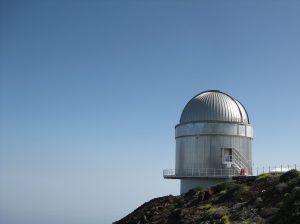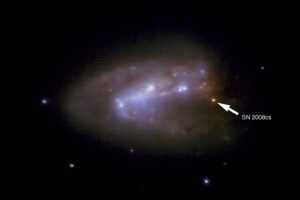
NUTS2
The yearly supernova (SN) candidate discovery rate is increasing exponentially thanks to the revolution in time domain astronomy by large-scale all-sky transient surveys. The full scans of the entire night sky ensure the discovery of young, bright transients within an increasingly large volume of the local Universe in an unbiased way. NOT Unbiased Transient Survey 2 (NUTS2) is a Large observing programme at the 2.56-m Nordic Optical Telescope (NOT) to classify and follow up SNe, SN impostors, and tidal disruption events. NOT observations will play a fundamental role in addressing a whole host of science work packages, e.g.: (i) SN Ia progenitors and their explosion physics, (ii) the progenitors and rates of core-collapse SNe, (iii) nuclear transients, and (iv) extreme SNe. NUTS2 is led by PIs from Finland (E. Kankare) and Denmark. My research interests within NUTS2 are focussed on transients interacting with their circumstellar medium (e.g. Kankare et al. 2012, MNRAS, 424, 855; 2015, A&A, 581, L4; 2025, A&A, 699, A177) and highly energetic nuclear transients (Kankare et al. 2017, Nature Astronomy, 1, 865).
SUNBIRD

Luminous infrared galaxies (LIRGs; 10¹¹ L_Sun < L_IR < 10¹² L_Sun) have a factor of ~100 higher star formation (SF) and core-collapse supernova (CCSN) rates compared to those of normal spiral galaxies. Dust extinction already affects SNe in normal galaxies (e.g. Kankare et al. 2014, A&A, 572, A75). However, the number of CCSNe discovered in LIRGs has remained extremely modest due to the high host galaxy extinction and background contrast effects. Our international Supernovae UNmasked By Infra-Red Detection (SUNBIRD) collaboration has carried out high spatial resolution near-IR full adaptive optics (AO) programmes at 8-m class telescopes (VLT, Gemini, Keck) to search for highly obscured CCSNe in samples of LIRGs (e.g. Kankare et al. 2008, ApJ, 689, L9; 2012, ApJ, 744, L19; 2014, MNRAS, 440, 1052; 2021, A&A, 649, A134). The long-term goal of the project is to obtain a statistically significant sample to study the CCSN population in these galaxies and to derive robust extinction and missing fraction corrections for optical CCSN rates from the local to the high-redshift Universe.
